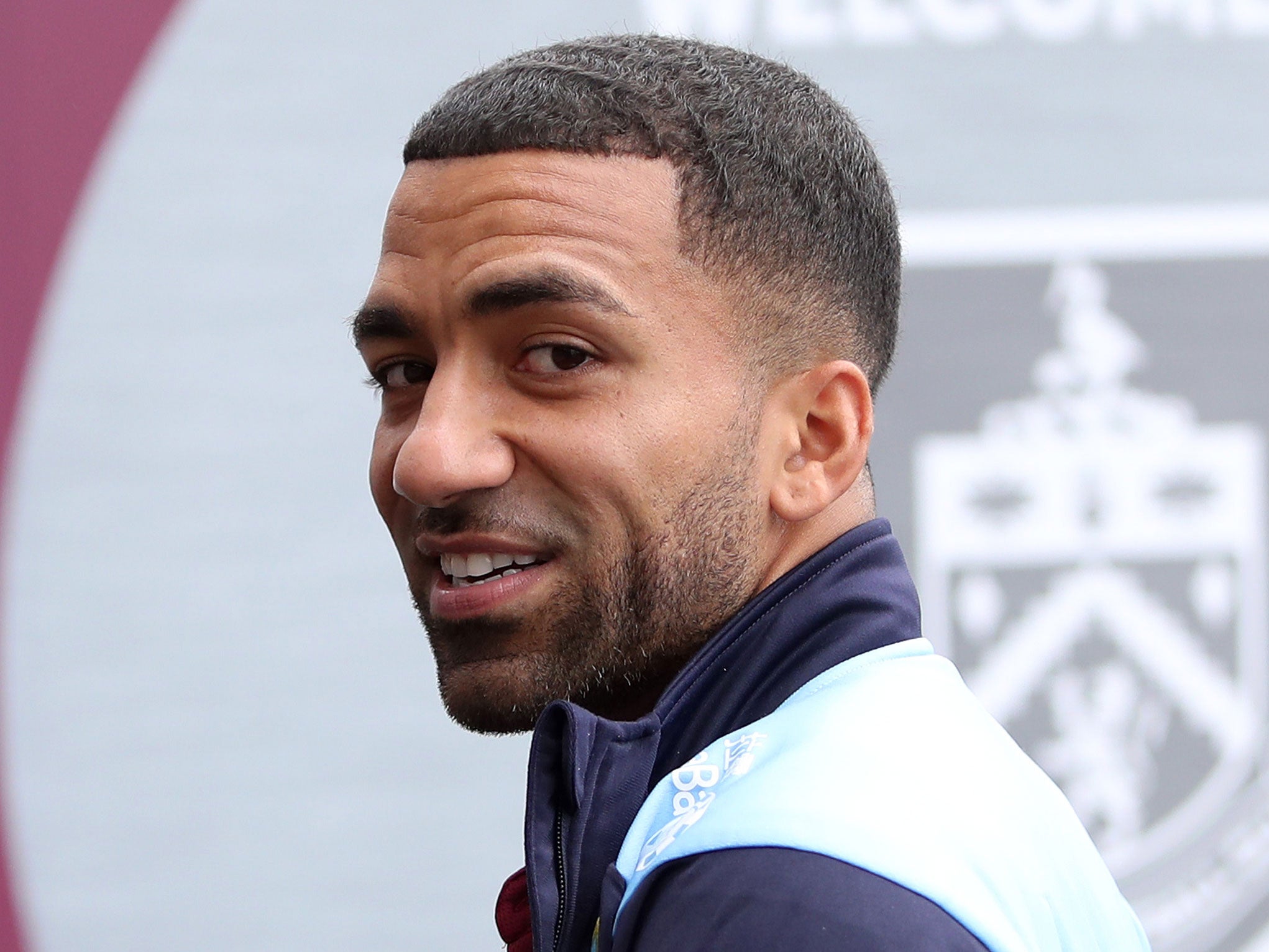Sport has made much progress in the field of mental health – but there’s still a long way to go
Where do the clubs, coaches, sporting bodies and governing authorities fit into the mental health agenda? What are they doing to help? In the final piece of The Sporting Mind series, Samuel Lovett reflects upon these questions and assesses what more we can do


As with so many aspects of modern sport, huge progress has been made over the past decade in challenging the stigma surrounding mental health. From the Football Association’s recent ‘Heads Up’ initiative to rugby league’s dedicated ‘State of Mind’ weekend, doors have been flung open in raising awareness and encouraging transparency. With sporting bodies and charities working hard to create a space that promotes positive mental health, athletes are coming to see there is no shame in admitting to struggling and accessing help.
The approach is slowly paying off. Across the sporting community, more and more athletes – both past and present – are going public with their experiences. Indeed, the Professional Cricketers’ Association, Rugby Players’ Association and Professional Footballers’ Association have all seen an increase in members accessing support in recent years as sporting and societal attitudes towards mental health have changed.
The athletes themselves have played a massive role in this shift. “The more players/ex-players that speak openly about their issues in the press and media often leads to a spike in calls,” Shellie Heather, deputy CEO at Sporting Chance, tells The Independent. This was the case with the PFA after both Danny Rose and Aaron Lennon went public with their respective struggles.
Sport needs more of these brave individuals. These are the men and women with the power, through the simple act of speaking, to change the discussion around mental health. But sport also needs those individuals who aren’t afraid to put their wellbeing first. As Marcus Trescothick showed in retiring from international cricket, sometimes there are those obstacles too great to overcome. In some instances, the decision to take a step back may be the only option available to alleviate an athlete’s inner turmoil. In these cases, athletes need to know it’s acceptable to do so. As well as challenging cricket’s own stigma, Trescothick demonstrated that there are some things more important than sport.
***
So how to continue the progress that has been made so far? Crucially, more corners of the sporting community need to appreciate that the pursuit of success and the preservation of athlete welfare needn’t be mutually exclusive. The two can work hand in hand. Success comes at a cost, of course, but the price of that cost can be determined by the application of emotional intelligence, open communication and education.
Take coaching culture as the most obvious example. History shows that a coach who pushes his athletes to their physical and mental edge, who berates and abuses, who rules through fear – these individuals can cultivate success (however short-lived it may be). But it needn’t be this way. Those player-centric coaches who tailor their ways and words to suit the characteristics of their athletes – whether that means admonishing one individual and placing an arm around another in times of defeat – can similarly deliver results while preserving an athlete’s mental wellbeing. The presence of pressure remains absolutely vital but establishing the right approach is what sets these coaches apart from their less emotionally-educated peers.
Unique to the world of team sports is also the ability to pick those players who fit the mould of a club’s particular culture. Recruiting a footballer or cricketer who suits the values of a club, and avoiding those who do not, drastically reduces the potential for conflict. “Perhaps it comes down to ensuring, early on in the process, that the individual has the mental and emotional resilience to be an active part of that landscape,” says Heather. “They may have the physical skills and attributes to be a professional sportsperson, but do they have the mental and emotional skillset?”
Individual sports don’t necessarily have this “luxury”, says Dr James Bell, head of mental health at UK Sport. From the Olympic and Paralympic perspective, a coach’s emotional intelligence is even more important in getting the most out of their athletes. “When you’re at that professional level and have the people around you, what makes them professional is if they can adapt to each individual and they know how to push you,” Ellie Simmonds tells The Independent. “That dictatorship… that being controlled doesn’t work for me. But for other people it does.”
As shown earlier in the series, sport’s toxic coaching cultures continue to persist. But with the right action from the relevant authorities in educating their coaches and purging those disruptive influences, change can be achieved. Only with a concerted, top-down effort is elite sport going to create those balanced, flexible and accommodating environments that push athletes to be their best without driving them to the brink.
As has been stressed to The Independent, introducing more psychotherapists to the sporting domain would similarly help to merge the preservation of athlete welfare with the struggle for glory – without blunting sport’s dramatic edges.
For psychotherapist Gary Bloom, the philosophy of ‘winning at all costs’ – and the mental strain that this brings – needs to be flipped on its head whereby failure isn’t feared but embraced. “Sports people are not allowed to have bad days and look at how they crack,” he says. “An olympic ice-skater who reaches gold-medal standard is at that standard because they’ve fallen on their backside a thousand times. Those mistakes and errors are key to the success.
“I think working with sports people, trying to introduce into their psyche that they don’t always have to be brilliant to be very effective and that if they lose an event … you actually learn more. You always learn a lot more losing than you ever do winning.”
In challenging the catastrophisation of failure, and appreciating that defeat can be used as a learning tool on the road to improvement, the turmoil that arises in chasing success can be softened. But putting this theory into practice is easier said than done. Without the support of the clubs and authorities in bringing in the right people, the conversation around mental health will only go so far.
Of course, there are those mentally draining aspects of elite sport which cannot be avoided. Indeed, the setback of an injury is something the vast majority of elite athletes have faced at one point in their career. However, the manner in which an individual approaches an injury – and the support provided – is crucial in shaping their psychological response.
As explored in Part Two of the series, athletes are often pushed to the periphery during times of injury. The inability to train alongside teammates, and the disruption this brings to an individual’s routine, is to be expected. But the sense of alienation that comes with it shouldn’t be.
In team sports, it’s often the simple acts which can make the greatest difference: bringing an injured player along to an away game, finding them coaching opportunities within the club, or involving these individuals in tactical debriefs ahead of fixtures. “It would be nice for clubs to interact and engage with players with long-term injuries,” says Michael Bennet, head of welfare at the PFA. “Some clubs do that. Some clubs don’t. Every club is different.”

Out of sight and out of mind, an injured athlete is mentally vulnerable. But if kept part of the sporting picture, and made to feel valued by their club or organisation, this can help to keep at bay those thoughts of negativity which precipitate a crisis in mental health.
Using free time effectively can serve the same purpose. “Utilise it well,” says Karl Fitzpatrick, CEO and former head of player welfare at Warrington Wolves. “Focus and put your energies into life after rugby as there’s only so many hours in the day you can focus on your rehab and recovery.” Whether it’s putting together a post-retirement business plan or dedicating that time to education, a new focus can keep an athlete from unravelling.
The transition out of sport – whether forced or voluntary – is yet another unavoidable mental stresser. But, as with injuries, this particular trigger can also be combatted with the right approach.
“I think sport has a role to get players into the sport safely and out of the sport safely,” says Ian Thomas, director of development and welfare for the PCA. Alongside its workshops and transition talks, the PCA provides a ‘personal development plan’ for its members – 80 per cent of whom currently subscribe to the scheme. This outlines what players want to do after retirement, their transferrable skills and how they can go about achieving their objectives.
“The largest thing we do is fund their ideas,” adds Thomas. “Our players can claim for up to around £15,000 per year to towards their course fees and that in itself is an opportunity and support from the game to plan for the future.”
Rugby union has adopted a similar approach. The RPA runs an annual ‘transition’ weekend for players to discuss the emotional impact of retirement, to formulate plans for the future and to propagate a general sense of togetherness at what can be a difficult time.
“The more we can do to try and create opportunities for players to connect with others that have gone through or are going through that transition, it helps manage the whole process,” says Caroline Guthrie, a senior personal development officer at the RPA.
In forcing their athletes to acknowledge life after sport – and to prepare for it – cricket and rugby union have raised a conversation which, although by no means a panacea, can help to soften the blow of retirement.
***
Although more and more support now exists courtesy of the relevant organisations and governing bodies, not all athletes are prepared to access it. Out of fear of showing weakness or losing a spot in the starting XI, many remain unwilling to reach out.
For some, it’s the responsibility of the individual to take that final step. “It’s like leading the horse to water – but the horse has still got to drink,” says Fitzpatrick. “You can’t force it to do so. There is a duty of care, I’d say, but it ultimately lands at the feet of the athlete.”

Is it fair to assume that the authorities can only do so much in helping those in need? Trescothick suggests so. “It’s only when you’re ready to talk about it when you get to that point [of seeking help]. It’s solely on the player,” he says. “If the player doesn’t want to interact and engage then it’s very tricky.”
But aren’t we looking at it from the wrong angle? Instead of thinking what can we do to help those athletes in crisis, shouldn’t we be thinking what can we do to stop them from reaching this stage in the first place? For herein lies the crucial point: the current mental health agenda remains inherently reactive. The structure and practices are in place to help those already in need. But only through a proactive, more holistic approach can we hope to keep our athletes from drifting to the brink.
It’s an ambitious goal but one we must nonetheless work towards. Establishing parity between physical and mental health is key to this, and only with appropriate funding and greater commitment from the relevant governing bodies and clubs will it be achieved.
With the right focus, imagine the changes and measures that could be rolled out. More psychotherapists on the ground to cultivate the correct philosophies among sportspeople. More independent and confidential support spaces away from an athlete’s sport. Greater dedication to educating these individuals on mental health – and making them aware of the triggers present in sport – from day one of their careers. More initiatives and schemes to educate ourselves, in curbing our abuse and adjusting our expectations. Increased efforts to remove those elements within sport – coaches, teammates, club values or practices and traditions – which discourage struggling stars from accessing help or coerce them into silence.
Such is the complex and individualised nature of mental health, there will never be any hard and fast rules to combatting the issues we face. What works for one individual may barely scratch the surface for another. And we must also be aware that changing cultural attitudes and practices is no easy process – it’s one that requires time and patience. But that isn’t to say there aren’t numerous options available to us in making the necessary inroads to creating a culture that accommodates for mental health on a far greater scale.
Make no doubt: we’ve come a long way. Perceptions are changing, athletes are speaking out, the stigma is slowly fading. But there’s still more to be done. The challenge, now, is casting aside the industry’s lingering inner demons and striking a balance which preserves both the wellbeing of today’s athletes and those thrilling, captivating features which make sport what it is.
Join our commenting forum
Join thought-provoking conversations, follow other Independent readers and see their replies
Comments
Bookmark popover
Removed from bookmarks